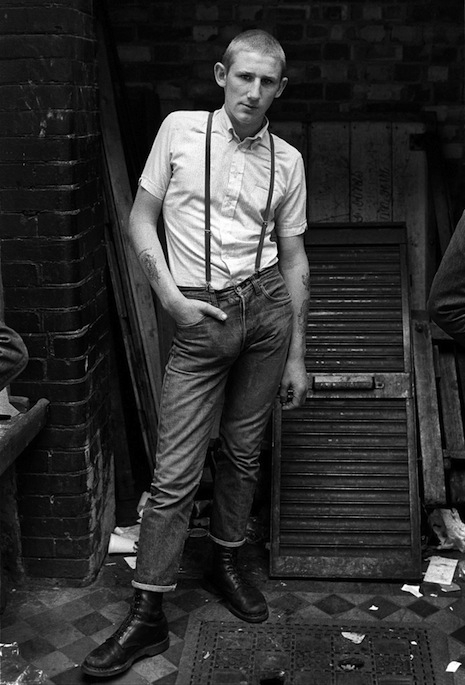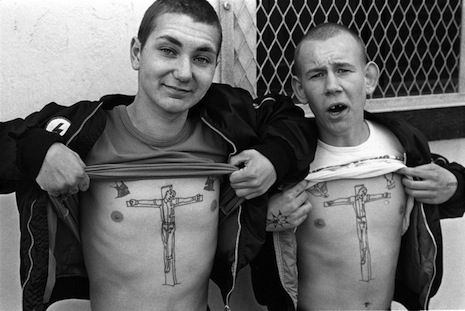
Hitler the Hells Angel.
A gang of British Hells Angels ride into town. They gather at their favored bar in Birmingham, England, the aptly named Oddfellows’ Arms. The bar is the last remnant of a once-thriving working class area. Inside, the Angels drink, chat, and carouse. At one of the crowded tables a young biker has “Mum + Dad” tattooed on his soft white arm.
A film crew documents these activities. When asked, the Hells Angels talk of their rejection of society’s values, their independence, their freedom. They relish their dirty appearance, long hair, and their uniformity of dress. One biker has a jacket covered with the Nazi insignia. He says his parents’ generation fought the Nazis—“The only good German was a dead German,” they said—but he’s never met a bad German. He wears the badges and pins to shock, to disgust, to rebel—to show his “outlaw” status.
Though these Hells Angels consider themselves free of society’s rules, they do have their own codes and rituals by which they live their lives. Outside the bar, a young couple named Sylvia and Hitler get married. They want their relationship to be recognized by the other Angels. The marriage is a genuine ritual. To the rest of society Hitler and Sylvia are “living in sin.” Like any other newlyweds, the couple will have to get a job, some “bread” and somewhere to live.
When Hitler is asked about his name, he explains he was called “Hitler” by the other Angels because he has “proved himself.”
Interviewer: How do you prove yourself?
Hitler: There’s quite a few ways you can prove like. I mean, beat a skinhead up—that’s great. That’s class. I mean, if it was legal we’d go around hanging skinheads.
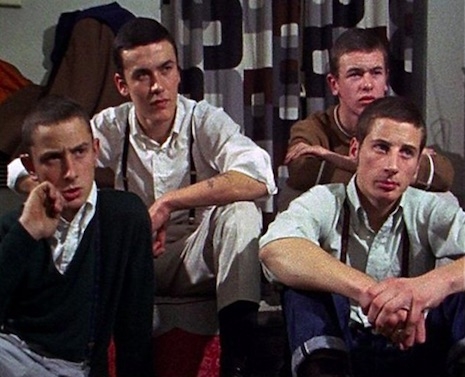
Four skins…
The kids were out of control. Or so it seemed. The rise in births after the Second World War saw a massive number of youngsters reach their teens and twenties during the 1960s. There was a fear the country was being swamped by gangs of youths. There was no longer any National Service to dissipate their energy on military maneuvers or war. There was more money. More leisure time. More entertainment. Pop music and television were the new gods. For an older generation, the hysteria of Beatlemania—with its “out of control” mobs of teen girls—was as much a portent to the breakdown in British society as the gangs terrorizing the inner cities. Teddy Boys. Razor gangs. Rockers. Mods. Tribes defined as much by their violence as by their tastes in music, their clothes, their modes of transport, or their goddamn hairstyles.
In the 1950s, poet Thom Gunn wrote a highly preceptive poem called “On the Move” about the rise of rebelious youth and their chaotic, unfocussed energy. The poem describes a biker gang roaming across America “reaching no absolute, in which to rest” always moving “toward, toward.” Gunn was inspired by The Wild One, the Marlon Brando movie, where his character Johnny was asked “What you rebeling against, Johnny?” To which Brando’s character replies, “Whatcha got?” Though Gunn’s admiration for the bikers’ rebellious attitude is obvious, he sees their actions as wasted and inadequate to provoke any real change.
By the late 1960s, skinheads were considered a bigger threat to the British public than bikers. Hell’s Angels kept their business amongst themselves. Skinheads attacked anyone—though primarily anyones of a different ethnicity to their own “pure blood” white skin. Skinheads were thuggishly unrepentant “bovver boys” who’d give you a kicking as much a look at you.

Skinhead Steve with his parents.
The documentary shifts to a group of young skinheads from London. They brag about “Paki bashing.” They crow about their racism and violence. The film focuses on one young skinhead called Steve. The camera follows him home where he watches TV with his mom and dad. His father had been a Teddy Boy. He understands the appeal of being in a gang. Steve tells him about the thrill of marching through South End a thousand strong. The feeling of being part of something says Steve, would bring “tears to your eyes.”
Steve: It makes you feel proud. It will last for a little while. Then something new will come along. But till then you’ve got us. It’s just the way it goes.
More after the jump…






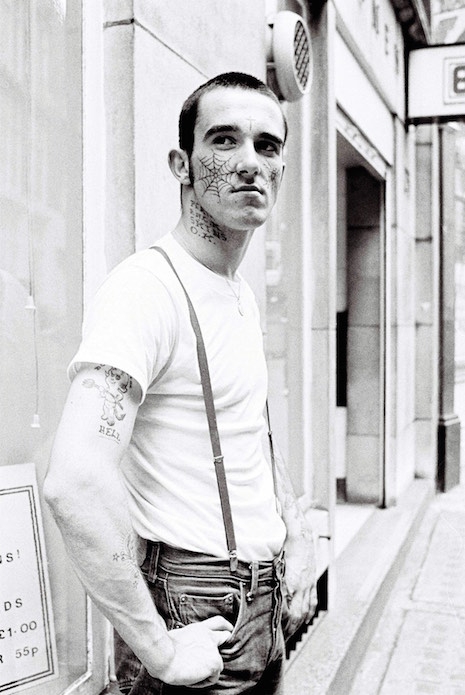


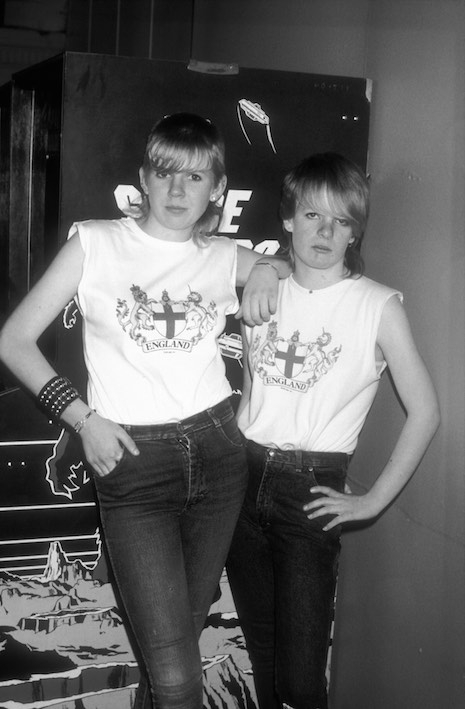
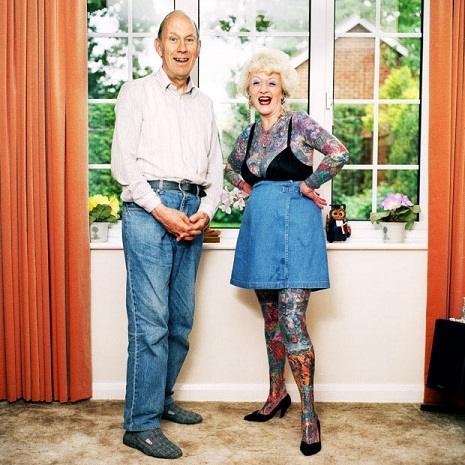
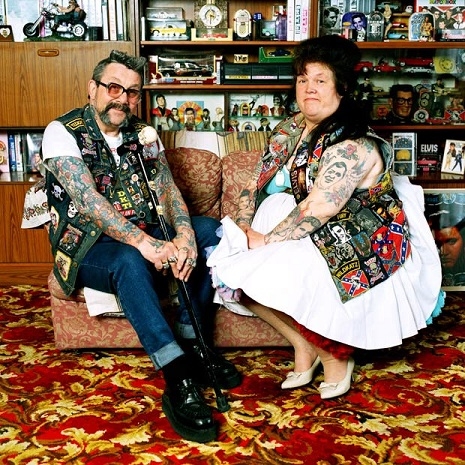
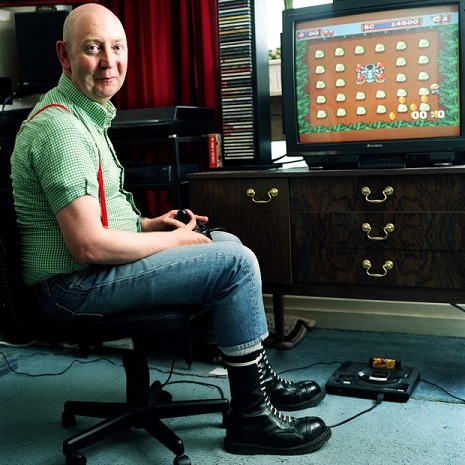
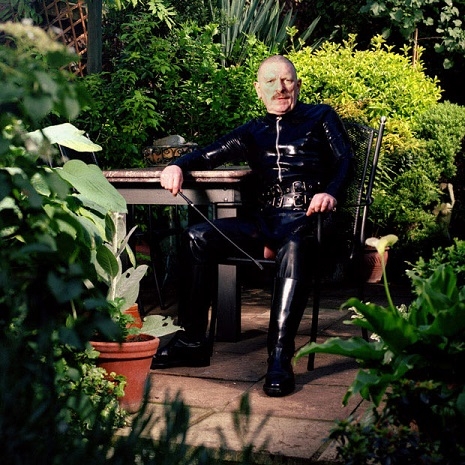
_465_708_int.jpeg)

